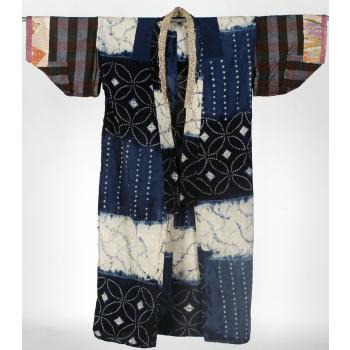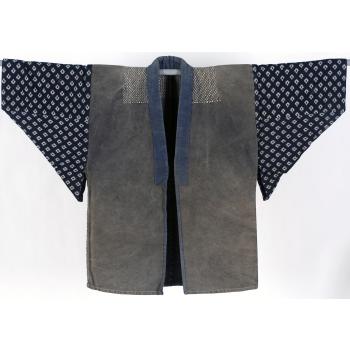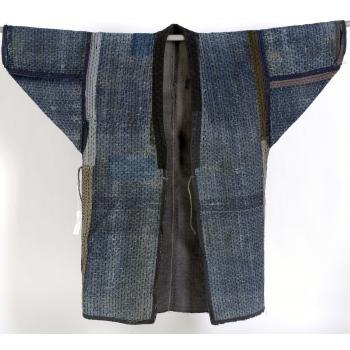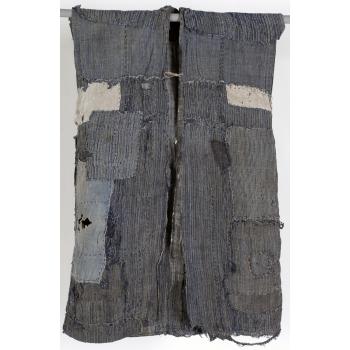Textiles - Japanese
The Japanese Country Textile collection consists of 62 functional textile pieces that include bedding, clothing, diapers, futon covers, and adult garments. They were created between the late 1800’s and the 1930’s, and have merit both as folk art and historic artifacts.
Japan did not grow cotton until the mid-18th century. Like silk, cotton was the provenance of the wealthy. The poor people who made up a large part of the farming population dressed themselves by learning how to use natural plant fibers including wisteria, hemp, and nettle. They wove these fibers for all their clothing and textile needs. Eventually, as ships came to Japan for trade, the rag merchants introduced cotton. Bundles of rags were divided among the communities and used with plant fibers to strengthen garments and to patch clothing and bedding. Women, who were traditionally responsible for providing clothing for their families, not only used every scrap of cotton, they strategically placed stitches in their quilting, wove unraveled threads, and patched again and again to make a beautiful quilted product. Their aesthetic awareness of color and pattern are obvious in their work.
Times have changed, and the extreme frugality that inspired this art form has diminished. As families joined the middle class, they embraced store-bought and Western dress. People with the knowledge and skill to grow, weave, and sew in the old ways are dying. Acquiring this stellar collection was a rare opportunity.
The pieces are worn, but for this category of material, the condition is considered excellent. Conservation treatment was not extensive, and much work was done internally by Kohler Foundation preservation technicians under a conservator’s direction. The collection was added to the growing textile collection at the John Michael Kohler Arts Center in 2009.







